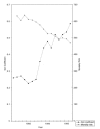Is social capital the key to inequalities in health?
- PMID: 12511401
- PMCID: PMC1447706
- DOI: 10.2105/ajph.93.1.122
Is social capital the key to inequalities in health?
Abstract
There has been vigorous debate between the "social capital" and "neomaterialist" interpretations of the epidemiological evidence regarding socioeconomic determinants of health. We argue that levels of income inequality, social capital, and health in a community may all be consequences of more macrolevel social and economic processes that influence health across the life course. We discuss the many reasons for the prominence of social capital theory, and the potential drawbacks to making social capital a major focus of social policy. Intervening in communities to increase their levels of social capital may be ineffective, create resentment, and overload community resources, and to take such an approach may be to "blame the victim" at the community level while ignoring the health effects of macrolevel social and economic policies.
Figures


References
-
- Townsend P, Davidson N. Inequalities in Health: The Black Report. Harmondsworth, England: Penguin; 1982.
-
- Lynch J, Kaplan G. Socioeconomic position. In: Berkman LF, Kawachi I, eds. Social Epidemiology. New York, NY: Oxford University Press; 2000:13–35.
-
- Davey Smith G, Gunnell D, Ben-Shlomo Y. Life-course approaches to socio-economic differentials in cause-specific adult mortality. In: Leon D, Walt G, eds. Poverty, Inequality and Health. Oxford, England: Oxford University Press; 2000:88–124.
-
- Wilkinson RG. Unhealthy Societies: The Afflictions of Inequality. London, England: Routledge; 1996.
Publication types
MeSH terms
LinkOut - more resources
Full Text Sources
Research Materials

